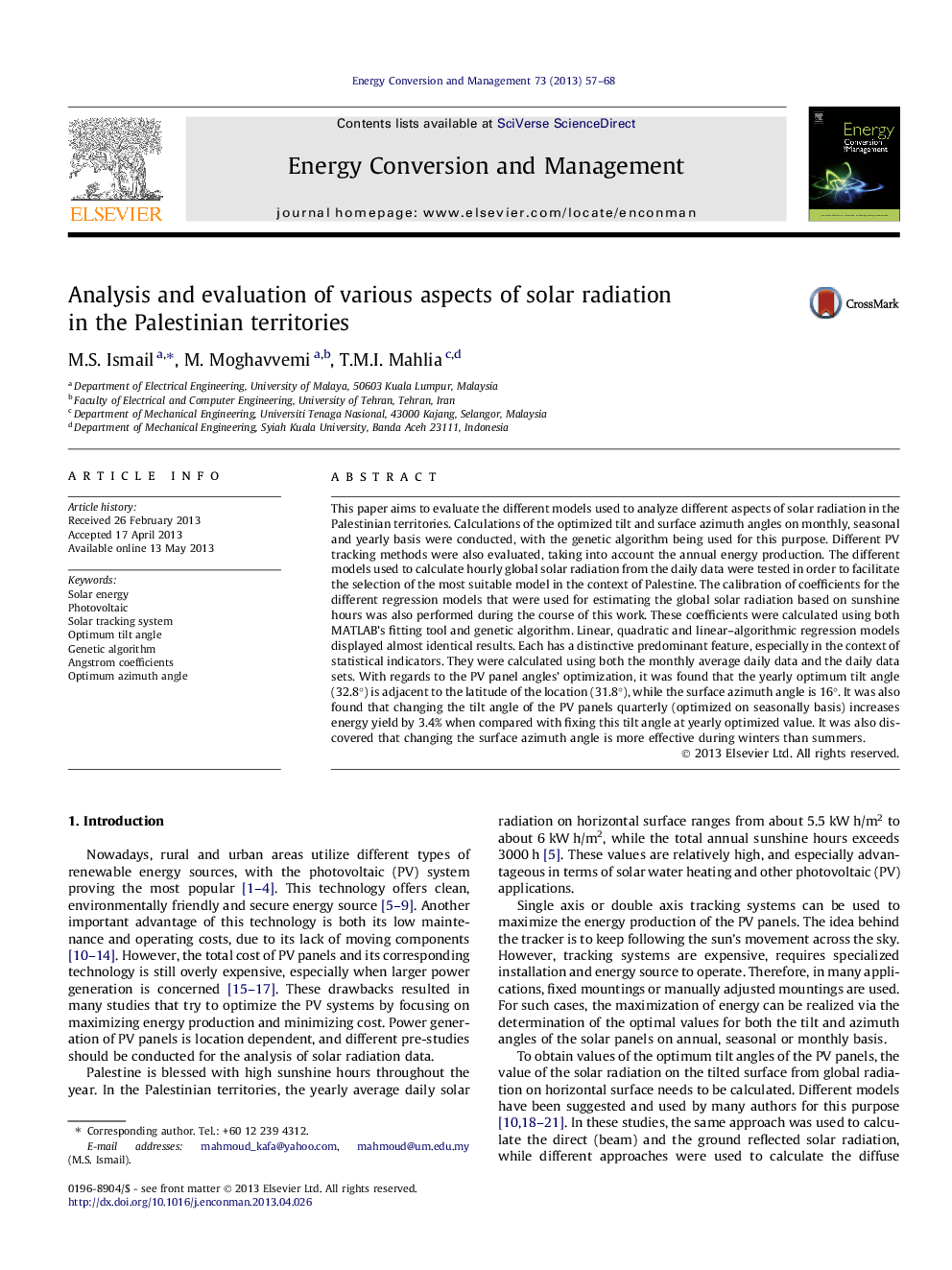| کد مقاله | کد نشریه | سال انتشار | مقاله انگلیسی | نسخه تمام متن |
|---|---|---|---|---|
| 764238 | 1462889 | 2013 | 12 صفحه PDF | دانلود رایگان |

• We used genetic algorithm to optimize the tilt angles of the PV panels.
• Different PV tracking systems were evaluated considering annual energy production.
• Various models used to calculate hourly solar radiation from daily data were tested.
• Coefficients of various regression models were calibrated to select the most accurate.
• Linear, quadratic and linear–logarithmic models showed approximate similar results.
This paper aims to evaluate the different models used to analyze different aspects of solar radiation in the Palestinian territories. Calculations of the optimized tilt and surface azimuth angles on monthly, seasonal and yearly basis were conducted, with the genetic algorithm being used for this purpose. Different PV tracking methods were also evaluated, taking into account the annual energy production. The different models used to calculate hourly global solar radiation from the daily data were tested in order to facilitate the selection of the most suitable model in the context of Palestine. The calibration of coefficients for the different regression models that were used for estimating the global solar radiation based on sunshine hours was also performed during the course of this work. These coefficients were calculated using both MATLAB’s fitting tool and genetic algorithm. Linear, quadratic and linear–algorithmic regression models displayed almost identical results. Each has a distinctive predominant feature, especially in the context of statistical indicators. They were calculated using both the monthly average daily data and the daily data sets. With regards to the PV panel angles’ optimization, it was found that the yearly optimum tilt angle (32.8°) is adjacent to the latitude of the location (31.8°), while the surface azimuth angle is 16°. It was also found that changing the tilt angle of the PV panels quarterly (optimized on seasonally basis) increases energy yield by 3.4% when compared with fixing this tilt angle at yearly optimized value. It was also discovered that changing the surface azimuth angle is more effective during winters than summers.
Journal: Energy Conversion and Management - Volume 73, September 2013, Pages 57–68